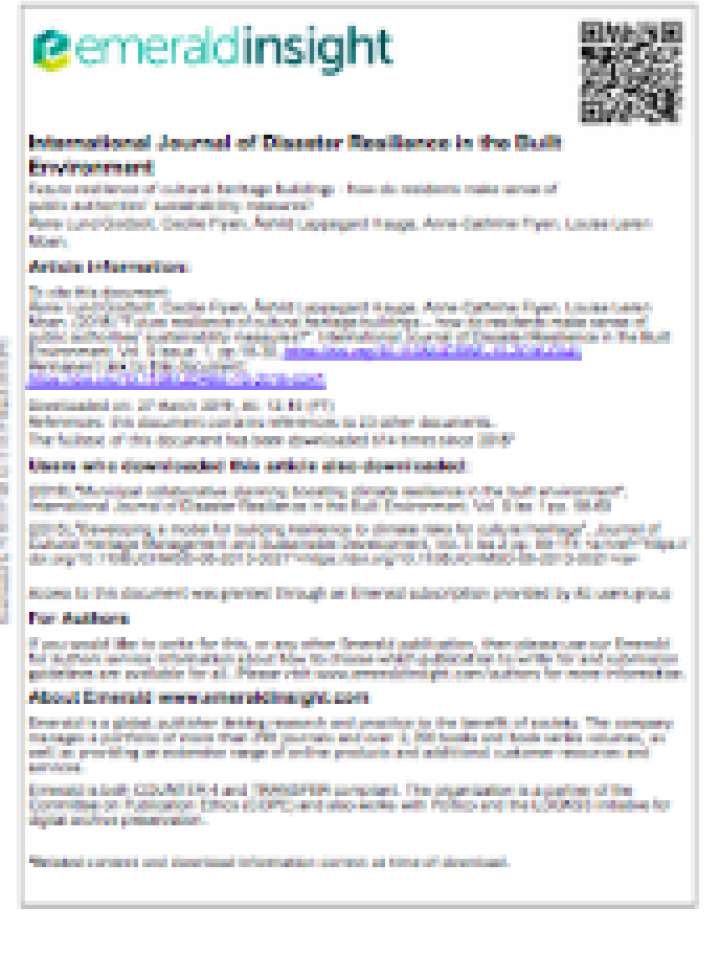Future resilience of cultural heritage buildings – how do residents make sense of public authorities’ sustainability measures?
This paper aims to analyze climate resilience and adaptation of cultural heritage buildings from the perspectives of both public authorities and residents. From a user-oriented domestication perspective, it investigates what barriers the residents meet when trying to make their homes more sustainable and resilient to climate impacts.
The analysis is based on a qualitative case study: an apartment building from 1890 in an area with protected heritage buildings in Oslo, Norway. The building is in need of renovation to withstand the impacts of climate strain. Expert interviews with public authorities, and interviews/focus groups with residents in the case study, form the empirical basis of the results.
The findings reveal that the residents find the public authorities’ sustainability measures confusing and lack information on what to do. The residents have domesticated an environmentally friendly lifestyle, but they are not very concerned about the cultural heritage status of their building. On the contrary, the protection clause is experienced as a barrier against renovation, and the windows are a special concern.
This paper gives new insights on how information from public authorities is perceived by residents, and thus indicates how policy measures for cultural heritage and sustainability should be communicated to achieve public understanding. Better cooperation between actors representing public authorities could result in easier access to information and less confusing advices for sustainability in cultural heritage buildings.
Explore further
